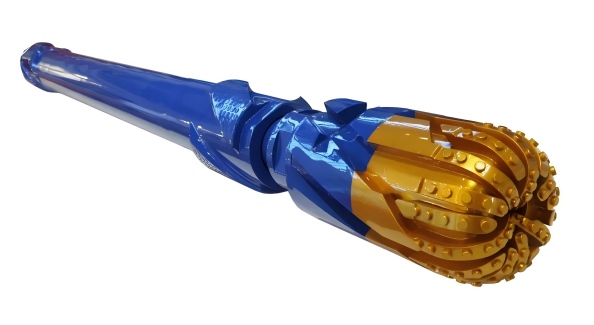The PDM Drill is a positive displacement downhole power drill that uses drilling fluid as power to convert fluid pressure energy into mechanical energy.
Components
The PDM Drill mainly consists of four major assemblies: bypass valve, hydraulic motor, cardan shaft, and drive shaft. The screw motor (hydraulic motor) is the core component of the drill.
- Bypass Valve Assembly
The bypass valve is composed of a valve body, valve sleeve, valve core, and spring. Under pressure, the valve core slides inside the valve sleeve, and the movement of the valve core changes the flow direction of the fluid—giving the bypass valve two states: bypass and closed.
During tripping in and out of the hole: The through holes of the valve sleeve and valve body are not closed, so the bypass valve is in the bypass state, allowing mud in the drill string to bypass the motor and enter the annulus.
When the mud flow rate and pressure reach the standard set values: The valve core moves downward to close the bypass valve hole. At this time, mud flows through the motor, converting pressure energy into mechanical energy.
When the mud flow rate is too low or the pump is stopped: The spring pushes the valve core upward, and the bypass valve hole is opened—returning the valve to the bypass state.
2.Hydraulic Motor
The hydraulic motor consists of a stator and a rotor. The stator is manufactured by injecting a rubber bushing into the inner wall of a steel pipe, and its inner hole is a helix with specific geometric parameters. The rotor is a screw rod with a hard coating. The rotor and stator mesh with each other, and a helical sealed cavity is formed by the difference in their leads to complete energy conversion.
The helix of the motor rotor can be single-start or multi-start:
Fewer starts of the rotor result in higher rotational speed and lower torque;
More starts of the rotor result in lower rotational speed and higher torque.
3. Cardan Shaft
The function of the cardan shaft is to convert the planetary motion of the motor into the fixed-axis rotation of the drive shaft, and transmit the torque and rotational speed generated by the motor to the drive shaft (and ultimately to the drill bit). Most cardan shafts adopt a flexible shaft design.
4. Drive Shaft
The drive shaft is responsible for transmitting the rotational power of the motor to the drill bit, while bearing the axial and radial loads generated by the weight on bit (WOB). Therefore, the drive shaft requires high hardness, wear resistance, and a long service life. In this case, quenching heat treatment can significantly extend the service life of the drive shaft.
Contact: Bree Zhang
Mobile/Whatsapp: +0086-183 9206 9193
Email: landrill@landrilltools.com
Web: www.landrilltools.com
Post time: Sep-18-2025








 5-1203 Dahua Digital Industrial Park Tiangu 6th Road,Hi-tech development Zone Xi'an, China
5-1203 Dahua Digital Industrial Park Tiangu 6th Road,Hi-tech development Zone Xi'an, China  86-13609153141
86-13609153141 

